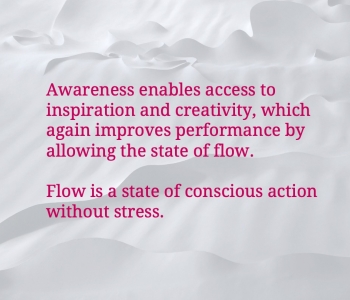Understanding Burnout: Signs, Causes, and Prevention Strategies
Considering we dedicate roughly a third of our lives to work, prioritizing mental well-being at work becomes essential. A healthy mind equips employees to navigate both achievements and setbacks, fostering resilience in the face of difficulties and the ability to work independently.
The rise of hybrid and remote work models presents unique challenges. While offering flexibility, these arrangements can also lead to isolation and increased stress, fueling the risk of burnout. This trend was particularly evident during the pandemic, where despite reduced physical commutes, stress levels and burnout reached new highs across many countries.
Stress is always internal, not external.
However, even in remote work, managers may not notice when something is deteriorating with an individual. A short video call or meeting can temporarily leave a good impression on everyone, at least until they reach the final stages of burnout.
It would be ideal if every employee or entrepreneur dared to signal as early as possible to themselves and others that their stress level or anxiety has increased, and they need a change. In practice, this often doesn't happen because mental well-being and intrinsic skills for self-management or intrapersonal skills are not taught in schools or workplaces.
In case you feel your workload is crushing and resources are scarce, honesty is the crucial first step.
Simply enduring the strain only leads to a downward spiral. Therefore, everyone, regardless of position, should bravely, honestly and clearly communicate their needs as well as the complexities they face – to leaders, colleagues, and even superiors (if you're a leader yourself).
Open communication fosters empathy and understanding, which are the cornerstones of finding solutions. By voicing your struggles, you pave the way for collaborative efforts to lighten the load and create a more effective work environment.
How to recognize the risk of burnout?
The first clear sign of moving towards burnout is transforming work stress into chronic stress.
This means that stress is not episodic or related to a complex situation or deadline but rather a part of daily life. It starts from not wanting to go to work to not having the energy to cope with previously accepted responsibilities or having the courage to decline new tasks.
Even with basic humane working conditions, such as secured breaks and vacations, the risk of burnout remains. The drive to achieve can easily turn into neglecting rest and breaks, creating a vicious cycle of increasing tiredness and building up even higher stress levels.
.jpg)
|
An effective method to notice burnout is adequate self-evaluation or self-analysis, which is the result of good awareness and awareness-based intrapersonal skills.
Therefore, follow and notice how well or poorly you are doing at work and how you feel there.
For self-evaluation, ask yourself the following questions:
- Can I maintain focus and is my professional efficiency good?
- Do I remain calm or do I often get irritated and tense?
- Do I enjoy my work, or is the day full of stressors that increasingly diminish satisfaction and efficient action?
- What is the integration level or balance between my work and personal life? Are family, hobbies, etc., still important to me and receiving the necessary attention and time?
- Do I feel that I continuously invest more time and effort than the salary is worth; am I recognized enough?
- Do I experience loneliness, lack of support, and breakdown under the burden?
- Have the negative answers to the previous questions led me to experience constant fatigue and a chronic feeling of exhaustion from which I cannot escape? Is there also cynicism and loss of interest?
If the first six answers are full of negativity and the two answers to the seventh point are clearly yes, then it is reasonable to conclude that you are already in some stage of burnout and need immediate change.
If there is a balance between work and the compensation and recognition received, and you feel good, it is worth checking to see if you are not riding the wave of achievement without resting.
The positive stress and the pursuit of ever-increasing achievement can often lead to burnout.
What are the symptoms of burnout?
The key to preventing and understanding burnout lies in recognizing its signs. Unlike a sudden event, burnout develops gradually, making it fully preventable.
The main symptoms defining burnout are as follows:
- Frequent or constant exhaustion or stress along with chronic feelings of fatigue don't disappear even after longer holidays, weekends, or breaks.
- Skepticism, cynicism, or mental distance towards work. For example, if you used to enjoy work and clients, but now everything annoys you and causes fatigue.
- Increased negative emotions and heightened emotional reactivity. For instance, bursting into tears or experiencing sudden anger or anxiety in the middle of a meeting or appointment. Under chronic stress and pressure for achievement, it is difficult to manage emotions, and suppressing them has been so long that there are internally reactive outbursts or total withdrawal and shame (tendency towards depression).
- Feelings of shame, incapacity, and worsening chronic time shortage.
Burnout never occurs overnight; it is the result of long-term positive or negative stress.
Falling from the wave of positive stress and achievement is more common than reaching burnout through negative stress.
Path to burnout is always a process of months or years, during which stress increases, sleep and eating disorders occur more frequently, tension builds up in the shoulders and/or back and several other ailments may occur. Often alcohol, drugs, or extreme sports enter the game to feel more alive amidst numbness. Most of these individually aren't too problematic, but when they are no longer isolated incidents but combinations, especially along with the intensified pursuit of extreme experiences, burnout is very likely already to be present.
Realistically burned-out individuals are often characterized by shame that they couldn't cope with their work and couldn't achieve their goals because they lack energy and time.
Guilt towards colleagues or clients may also be added, and this shame leads in the final phase of burnout to the fact that due to the combination of exhaustion and shame, the person experiencing burnout doesn't even dare to inform their employer about their burnout.
Factors at work leading to burnout
The external factor of burnout is often that the number of tasks and the period of execution are not in line with people's skills, the tools given to them (including human and financial resources and technological tools), and abilities. Toxic relations and lies or inner competition within the workplace tend to amplify those problems.
Therefore, in addition to acquiring proper intrapersonal skills to lead your own inner processes, it helps to have the courage to say 'No" if there are no necessary resources or time available for the task.
Remember, an honest 'No' benefits everyone! It allows you to focus on completing existing tasks, reducing your risk of burnout. Furthermore, it communicates to others the need for better workload distribution in the future.
Workplace bullying and unfair treatment by a supervisor or colleagues can promote stress, anxiety and burnout. Therefore, good working relationships and a transparent management culture are important in the workplace.
The complexity of burnout and recovery
Burnout is a crushing ordeal that adversely affects a person's physical and mental health, quality of life, family and friendship ties, etc. The last phase of burnout overlaps with depression in 86%-92 of cases, so it is even more important to prevent it because it leads to mental health but also physical health problems.
A burned-out person needs support, rest, and recovery time.
Recovery also requires changing work conditions and requirements so that the person can recover and feel better again. The employer should be aware that when a burned-out employee returns to work, they need to see and perceive changes and support; otherwise, burnout symptoms will soon reappear.
Prevention of Burnout
The main method of burnout prevention is training your mind. This is done by learning awareness-based intrapersonal skills as this allows efficient reduction of stress levels. It is also important to learn how to recognize burnout as early as possible because without doing so, it is impossible to change your habits and work routines.
The common goal of employees and employers should be to do work in a way that keeps people healthy.
Stress is not only the beginning of a cascade of mental health decline, it is also a cause of cardiovascular diseases, etc (we have explained it before in this blog).
Training your mind health helps to prevent chronic diseases (including depression, anxiety disorders, and also physical health problems).
The result of prevention is a decrease in sick days. But that's not all, good self-management and leadership skills also enable more effective action and cooperation.
People who know how to manage themselves also notice the needs and intrapersonal processes of other people and can take them into account more successfully. This improves harmony at work.
The benefit of intrapersonal skills base approach to burnout prevention
Good intrapersonal skills lead to work being engaging and productive. So, it is worth training the intrapersonal skills of your team members.
A mentally fit team isn't just about feeling included and healthy, it's about fostering a culture of psychological safety where individuals feel comfortable taking risks, sharing ideas, and learning from mistakes. This environment breeds innovation and collaboration, leading to teams that consistently achieve goals.
Team members who are mentally fit experience a sense of purpose and belonging. They are motivated by the work they do and find it meaningful. This translates into increased productivity and a positive work ethic. They are also more likely to practice gratitude, expressing appreciation for colleagues and opportunities to contribute.
Just like physical fitness requires regular exercise, maintaining mental fitness does the same. Training your mind leads to improved employee engagement.
When individuals are doing work that is challenging yet achievable, it fuels a sense of accomplishment and mastery. This sweet spot is the opposite of burnout, a state of exhaustion and cynicism.
By providing opportunities for training your mind and professional skills, teams can keep their members engaged and prevent burnout.
The benefits of a mentally fit team extend beyond the workplace. When individuals feel fulfilled and supported at work, they are more likely to carry that positive energy into their personal lives. This creates a ripple effect of wellbeing that benefits both employees and their families.
Investing in Mental Fitness Proactively is A Smart Move
Prioritizing mental fitness is no longer a nicety, it's a smart business decision. Studies show that companies with strong mental health initiatives experience lower employee turnover and increased employee engagement, leading to a significant boost in productivity and profitability.
Feeling safe to make mistakes, express your opinions, and challenge the status quo is the bedrock of psychological safety. A psychologically safe environment where fit minds work fosters a sense of security and empowerment, where individuals feel comfortable taking conscious risks and championing new ideas.
Psychological safety isn't just about self-expression; it's about building stronger relationships.
When employees feel comfortable pointing out potential issues and offering solutions, it strengthens the bond between them and leaders. This fosters a collaborative spirit and a shared interest in improving the workplace and work itself. However, this becomes easy only when stress levels are low and burnout is nipped in the bud.
Conclusion
Mentally fit employees often feel valued and engaged, leading to increased productivity and lower turnover.
Creating psychological safety, reducing stress and preventing burnout comes down to training your mind. It is a systematic proactive mental wellness approach. It is a mental wellness revolution that benefits everyone involved: the employer, the employee and their families and customers.
Stress reduction and burnout prevention is a smart business decision. It is an investment decision that boosts your business.
This stress awareness month blog post is written by Kaur Lass



